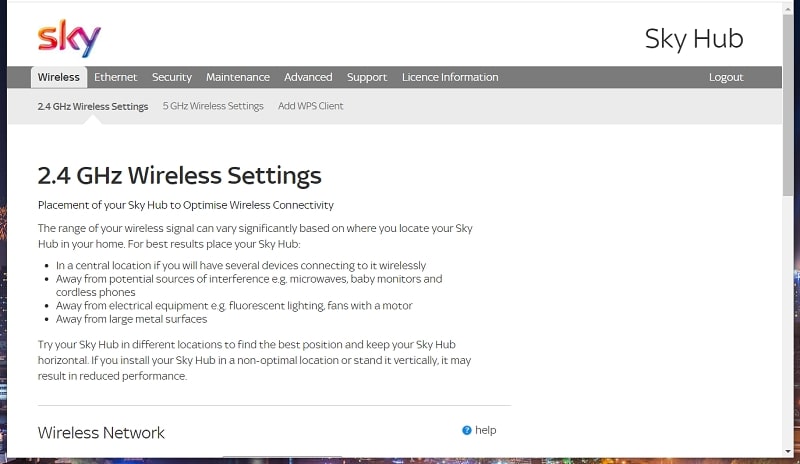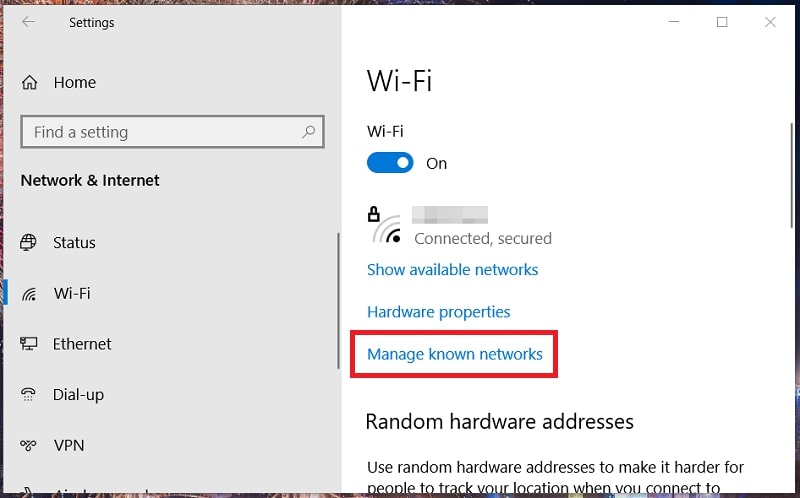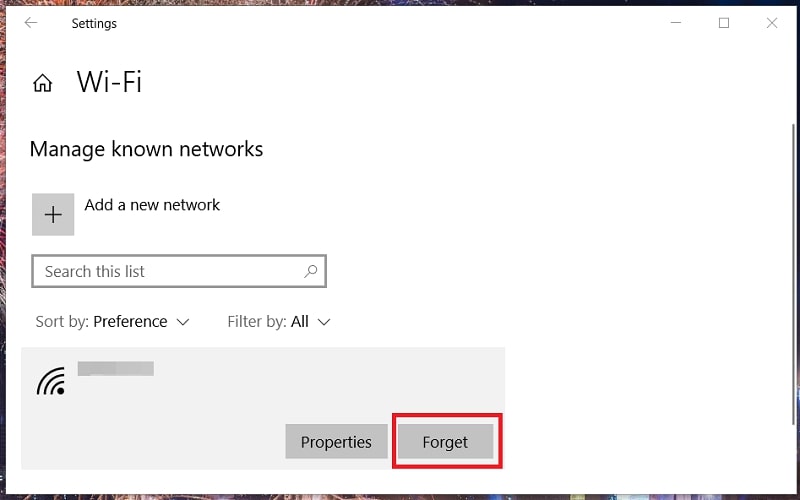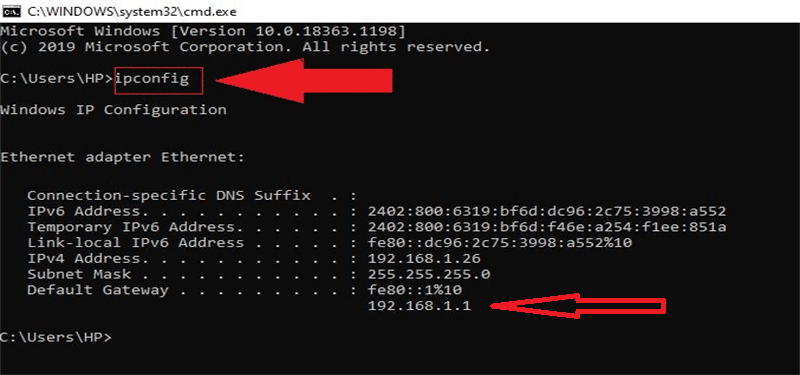Your Wi-Fi password is the one you need to enter for connecting your PC, and other devices, to the internet. All wireless routers come with a default password provided, which is the one you enter on your PC to connect it with a new internet connection. Many users will only ever need to enter their wireless connection passwords when they first hook up with new service providers. Yet, some users might still want to change their Wi-Fi passwords.
The Wi-Fi password protects your wireless internet connection from hackers. Default Wi-Fi passwords are often stuck on the bottom of routers. So, some users prefer to change their passwords to more secure ones. There are many password generator tools available with which you can generate an extremely secure new password for your wireless connection. If you’re wondering how to change a wireless password on Windows 10, check out the guidelines directly below.
Part 1. Change the Saved WiFi Password on Windows 10 Laptop
Windows 10 saves the Wi-Fi password for your connection so you don’t need to keep entering it. You’ll need to change the saved password in Windows 10 after you’ve changed your router’s wireless password. You can also fix wireless password typos by changing the saved one. This is how to change a Wi-Fi password in laptop on Windows 10.
Step 1: Open the Start menu, and click the “Settings” button there.
Read More: How to Open Settings in Windows 10
Step 2: Click “Network & Internet” to open a Status tab.
Step 3: Next, select the Wi-Fi tab in the snapshot directly below.
Step 4: Click “Manage known networks” to open the window shown directly below.
Step 5: Select the Wi-Fi connection you need to change the saved password for.
Step 6: Press the “Forget” button, which erases the saved password.
Step 7: Thereafter, click the internet access icon on your system tray.
Step 8: Select the Wi-Fi connection you’re changing the saved password for, and press the “Connect” button.
Step 9: Enter the new password for the connection.
Note that this method doesn’t change your router’s Wi-Fi password. It only changes the saved password on Windows 10. So, it’s no good changing the saved password to one that doesn’t match your actual Wi-Fi password with this method. This method enables you to reconnect with a Wi-Fi network.
Read More: How to Open Network and Sharing Center in Windows 10
Part 2. Change the Wireless Password of Router on Windows 10
To change the Wi-Fi password for all your devices to connect with, you’ll need to sign in to your router’s firmware. All routers have firmware software users can open with their IP addresses. The firmware software enables you to configure your router’s connection password and other settings for it. This is how to change Wi-Fi passwords in Windows 10 with router firmware.
Step 1: First, click the magnifying glass taskbar button for Windows 10’s search tool.
Step 2: Enter the keyword Command Prompt in the search box to find that command-line utility.
Step 3: Click Command Prompt in the search result to open its window.
Read More: How to Open Command Prompt in Windows 10
Step 4: Then type ipconfig in the Command Prompt’s window.
Step 5: Press Enter to initiate the ipconfig command. The Command Prompt will then display IP configuration details as in the shot directly below.
Step 6: Note down the default gateway number listed there, which is your IP address.
Step 7: Next, open your web browser.
Step 8: Type your default gateway number in your browser’s URL bar, and press the Enter key. Now your router firmware’s login page should open.
Step 9: Sign in to your router’s firmware settings. To get the login details for your firmware, open the router password website. You can select the company for your router on that page to check login details.
Step 10: Then look for and select a Wireless or WLAN tab within your router’s firmware that includes Wi-Fi password (key) and name settings.

=
Step 11: Click in the network password (or key) text box that includes your Wi-Fi connection password.
Step 12: Delete the current password.
Step 13: Then, enter a new Wi-Fi connection password there.
Step 14: Make sure you remember to press the “Apply” button.
Step 15: Close your router’s firmware page.
After changing your Wi-Fi password, you’ll need to reconnect all your devices with the new password. You might also change the saved Wi-Fi password in Windows 10 for the PC you’re utilizing first as outlined in part 1. Thereafter, you’ll need to reconnect any other devices you might have with the updated password. So, make sure you note down your changed password if it’s not one you can easily remember.
Bonus Tip: How to Show WiFi Password on Windows 10
Sometimes users might need to reconnect to their Wi-Fi connections to fix connection issues. However, users can’t do that when they don’t know what their wireless passwords are. Furthermore, users can’t sign in to router firmware to get their key details when they’re not connected.
In such circumstances, Wi-Fi password recovery software can come in handy. PassFab Wi-Fi Key is recovery software that enables users to recover their wireless connection user name and key details. You can also export your connection password to a CSV file with that software.
PassFab Wi-Fi Key is currently retailing at $47.94. You can try out a demo by clicking “Free Download” on the PassFab Wi-Fi Key page. This is how you can recover and export your Wi-Fi password with PassFab Wi-Fi Key.
Step 1: Download and install the PassFab Wi-Fi Key software.
Step 2: Next, open the PassFab Wi-Fi key window shown directly below.
Step 3: That window shows you the passwords for your current and old wireless connections. Select the checkboxes for connections you want to export details for.
Step 4: Press the “Export” button.
Step 5: Select a folder to export the Wi-Fi details to.
Step 6: Enter a file title for the CSV file.
Step 7: Then select the “Save” option. Thereafter, you’ll have a CSV file you can open from the folder you saved it to for quick reference when needed.
FAQ about Wi-Fi Password in Windows 10
Can I change my router’s firmware password as well as a Wi-Fi network password?
Some router firmware consoles include settings with which users can change passwords for firmware consoles along with connection ones. Note, however, that not all router firmware will necessarily include options for changing console passwords.
Is there another way I can change the saved wireless password in Windows 10?
You can change a saved Wi-Fi password via Network Connections in the Control Panel. Right-click your listed Wi-Fi connection there and select the “Status” option. Then select “Wireless Properties” and the Security tab. You can change your saved password by entering a new one in the Network security key box on the Security tab.
Can you tell me how to change the Wi-Fi password using cmd in Windows 10?
You can’t change your router’s Wi-Fi password with cmd commands. However, you will still need to utilize the Command Prompt to get the IP address for your router’s firmware.
Is there any way I can restore my original Wi-Fi password after changing it?
Yes, you can restore a default password by resetting your router. To do that, press and hold the small reset button on your router for about 30-60 seconds.
Can I change my router’s connection password without a Windows 10 PC?
Yes, you can sign in to your router’s firmware settings and change your Wi-Fi password from there within any mobile device browser. Thus, the method for changing your wireless password with router firmware is relevant to any device you can install web browser software on.
Conclusion
Although Windows 10 doesn’t include built-in settings for changing routers’ Wi-Fi passwords, it’s still relatively straightforward to do that with your router’s firmware. By doing so, you can establish a super-secure password to safeguard your internet connection. Furthermore, you might also be able to select a better authentication method for your Wi-Fi connection with router firmware while you’re at it.




